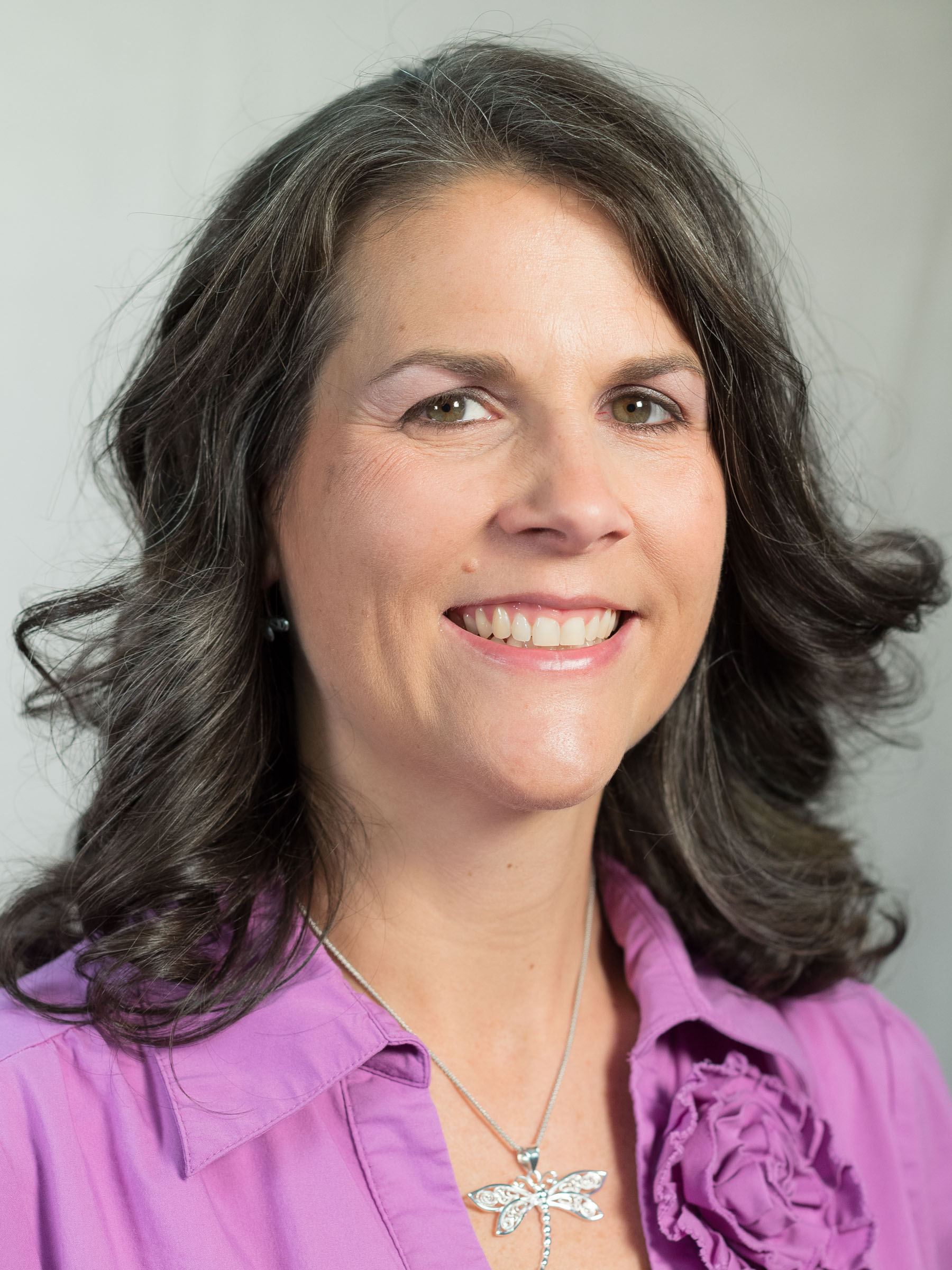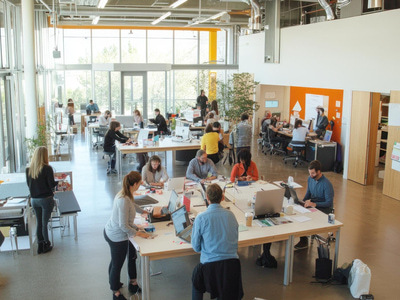New Designs for School
Learning Spaces Redefine Learning at High Plains School
Topics

We’ve all had the experience of truly purposeful, authentic learning and know how valuable it is. Educators are taking the best of what we know about learning, student support, effective instruction, and interpersonal skill-building to completely reimagine schools so that students experience that kind of purposeful learning all day, every day.
The unique design of STEAM-based High Plains School in Loveland, CO welcomes students with natural light and interesting spaces that encourage personalized learning.
Five second-grade students are gathered around Holly Richardson’s semi-circle table discussing tide pools.
“A tide pool can be its own world,” says Richardson, reading from a text. “What do you think about that? Is that a fact or an opinion? It’s kind of tricky, isn’t it?”
The semi-circle desk is under the American flag in one corner of the bright, large classroom. From Richardson’s vantage point, she can see her entire room. Richardson is the lone adult in the room, other than a small group of visitors. Students are clustered together in various configurations. There is a low level of chatter in the room, but the voices are worthy of a serene college library—not a second grade classroom of energetic seven-year-olds.
A student at one table is reading A Bad Case of Stripes by herself. Students at another table, several in chairs with orange exercise balls in place of hard seats, are discussing jellyfish. Books are open in their laps. In front of the students is an assignment sheet with a question: “What three things do all jellyfish need to have?”
Two girls at another table work with Bananagram tiles scattered between them. Nearby, the phonic words for the week are listed in their notebooks. And in yet another corner, students are strengthening their grammar and comprehension using Lexia. A couple of students are perched on oversized pillows as they follow the online program along.
All of the students know the expectations for classroom behaviors. That’s because the students set them up.
“At the beginning of the year, we talked about what we wanted our room to look like, feel like, sound like,” says Richardson. “I introduced each of the different kinds of seating choices and they came up with them. They know how we work together.”
They also know how they are doing in the effort to grasp key concepts. A Data Wall chart displays overall class performance and progress, including an expanding circle of “green” (good) data under the Lexia results.
Richardson’s classroom is a microcosm of the entire High Plains School. Now in its second full year of operation in eastern Loveland, High Plains is the first school in Loveland that was built from the ground up around the concepts of STEAM—Science, Technology, Engineering, Arts, Mathematics. The school’s unique design welcomes students with natural light and interesting spaces that encourage personalized learning.
High Plains School was the fourth stop on Thompson School District’s “Seeing is Believing” tour this year. (We also toured Thompson Valley High School, Turner Middle School, and Loveland High School.) The tour allows this Colorado district’s staff and district partners to see that traditional notions of how classrooms look and feel are being overhauled under the district’s push to personalize education.
Visitors at High Plains School observed new definitions for classrooms and learning spaces, which serve students from Early Childhood Education (three-year-olds) through eighth grade. Some classrooms are “open concept” with no fourth wall or door. Cozy spots under open stairwells and nooks invite students to work together in small groups. A rooftop garden and the close proximity to the High Plains Environmental Center add to the variety of options.
As principal, I help our team organize learning around one key theme: “How do the content areas play together?” Art plays second fiddle to no other subject. Learning is planned, or “engineered,” in collaboration with students.
Project-based learning is ubiquitous. Kindergarteners met with exterminators and district facility staff to develop ideas for preventing mice from invading homes under construction. Third-graders Skyped with toymakers regarding the development and marketing of a new product. Sixth-graders used the energy of the earth and sun to develop a product to minimize the devastation from major wildfires. Other students have produced children’s books, designed rockets, wrote and produced newscasts, or developed public service announcements to combat cyber bullying and internet safety.
The idea at High Plains is to take learning out of its content-specific silos and encourage learning—and collaboration—as students tackle assignments in groups. Upon completion, professional experts vet concepts and quiz students about their ideas and proposals, bringing the “real world” to school on a regular basis.
Erin Gilmartin Loften, professional development coordinator at the Colorado Department of Education (CDE), said she attended the High Plains School tour stop as part of the state’s work to support high schools with low graduation rates under federal school accountability requirements.
“What does personalized education, when done well, look like?” said Loften. “I wanted to have a sense of what it looks like.”
Roseyn Hood, associate commissioner for strategic partnerships at CDE, said the High Plains classrooms offer ample proof that teaching and learning can move from rote study and memorization to helping students develop more complex ways of acquiring knowledge and skills. In particular, Hood said she was “very impressed” with the integration of art as a tool for problem-solving and creative thinking.
“Learning is much more than ‘I have to know my math facts and I have to know my presidents,’” said Hood. “It’s how do you conceptually learn and digest and evaluate information. That’s more important for students. I heard far more about ‘how do we figure this out’ than ‘we can’t do this.’”
Back in Richardson’s classroom, the fifth-year teacher is asked if she ever taught in a more traditional classroom set-up, with the teacher in front and the students sitting in neat rows and columns. Richardson shakes her head, recalling the memory. Yes, she says, in her first year she taught in a “traditional” classroom set-up. She smiles and adds, “I’m never going back.”
Take the Seeing Is Believing Tour
- We See and Believe in Thompson School District
- Teaching & Learning Is an Open Book at Turner Middle School
- Student Success in a Fast-Evolving World at Loveland High School
- Learning Spaces Redefine Learning at High Plains School
- Learning by Doing at Ferguson High School
- Developing Critical, Creative, and Reflective Thinkers at Lucile Erwin Middle School
- Students and Teachers Owning Personalized Learning at Bill Reed Middle School
- Personalizing Learning with Music and Art at Mountain View High School
- Multidisciplinary Projects at Walt Clark Middle School




